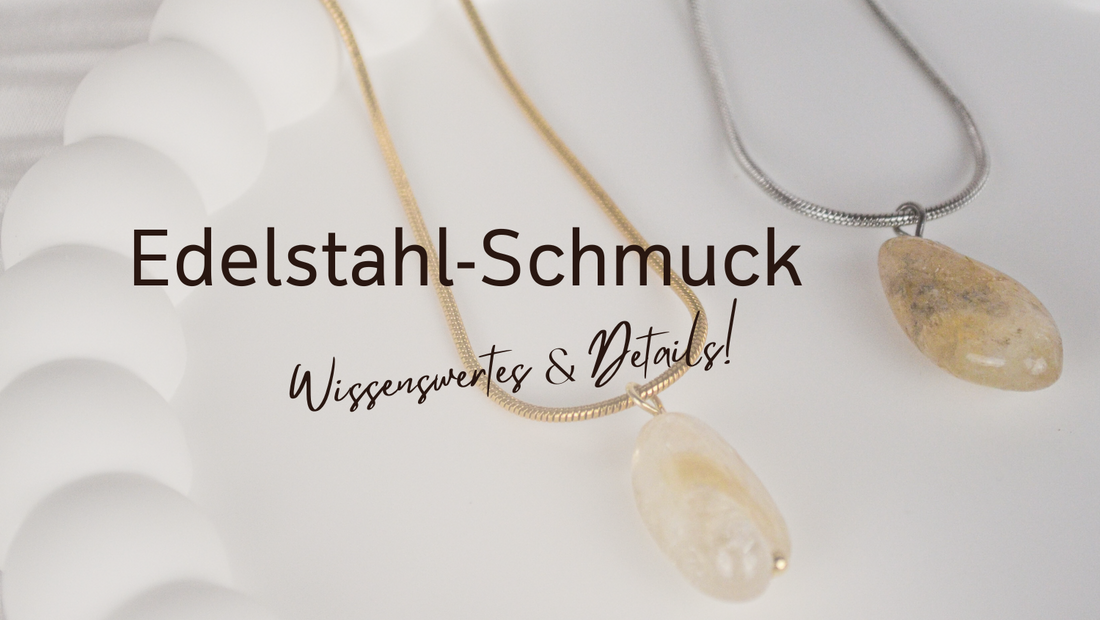
Everything about stainless steel
Share
Everything you should know about stainless steel
Stainless steel is a very popular material in jewelry, among other things because of its durability, cost-effectiveness and good skin compatibility.
But the topic of nickel allergy is often confusing. Even though stainless steel can contain nickel, it's often advertised as suitable for allergy sufferers. Let's take a closer look at why this is the case. Warning, things are getting technical today!
What is stainless steel?
Stainless steel is an alloy consisting primarily of iron, chromium, nickel, and sometimes molybdenum or titanium. Stainless steel is commonly used in jewelry—especially the following alloys:
- 316L stainless steel (also called surgical steel)
- 304 stainless steel
These alloys contain chromium (for corrosion resistance) and nickel (for brilliance, strength, and processing properties). Alloy 316L, for example, typically contains 16–18% chromium and 10–14% nickel.
Why is stainless steel still recommended for allergy sufferers?
Despite containing nickel, stainless steel—especially 316L—is often well tolerated . Why?
1. Nickel release is crucial – not the proportion
The EU Nickel Directive (2004/96/EC) regulates how much nickel may be released, not how much is contained:
-
Limit value: 0.5 µg/cm²/week
-
If a material remains below this, it is considered “ low nickel release ” and is approved for allergy sufferers.
316L stainless steel releases very little to no nickel because the nickel is firmly bound in the alloy.
2. Passivation layer protects
Stainless steel forms a very dense chromium oxide protective layer (passivation) that prevents corrosion and blocks the escape of nickel.
-
Even if scratched, this layer regenerates.
-
This makes the surface very stable and reliably protects the skin.
3. Surgical steel 316L = medical standard
316L is also used for implants, piercings and surgical instruments – in situations where absolute compatibility is required.
For which people is stainless steel suitable?
✅ Suitable for:
-
People with mild to moderate nickel allergy
-
People looking for affordable, long-lasting jewelry
-
Allergy sufferers who tolerate stainless steel well (often the case)
❌ Not suitable for:
-
People with severe nickel allergy who react to even small amounts of nickel
-
If the stainless steel is not 316L or is declared as “low nickel release”
Alternative materials for highly sensitive people
If stainless steel is not tolerated, these materials are more suitable:
-
Titanium (pure titanium) – absolutely nickel and allergen-free
-
Niobium
-
Plastics such as PTFE or Bioplast (for piercings)
-
Gold-plated or rhodium-plated jewelry (only if well coated)
-
Real silver (note: may also contain small amounts of nickel)
-
platinum
Conclusion
Nickel is a great and cost-effective alternative and is partially suitable for allergy sufferers. However, this depends on the severity of the allergy and personal sensitivity.
Ultimately, you know your body best and know how it reacts or may even have had experience with stainless steel jewelry.
We always make sure to source high-quality materials and are happy to replace the hardware upon request if you have an allergy or intolerance, or simply have a preference regarding the material.
Discover our unique jewelry now and find your next favorite piece at Linati Studio!

